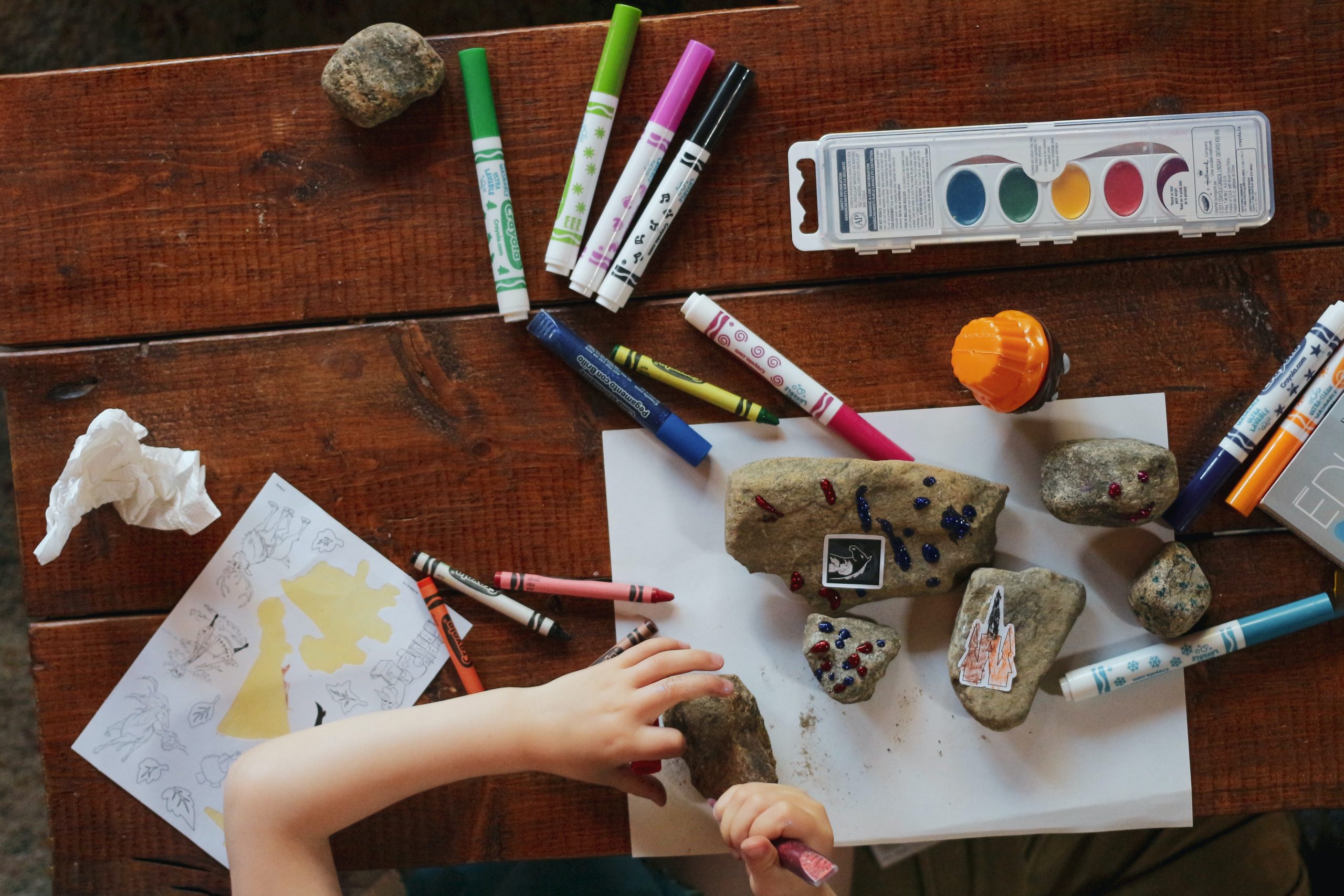Preparing for the birth of a baby is an exciting time. It can also be a little daunting. With nine months to plan, you have plenty of time to set aside money, prepare your home and choose a name. But, what is your take about budgeting for a baby on the financial side, and how much should you budget for a child? The answer is that it depends on where you live, your lifestyle, and other factors. However, most experts agree that the average middle-income family will spend about $12,000 to $14,000 per year on child-related expenses (not including college).
It costs upwards of $245,000 to raise a child for a middle-income family. The estimates vary based on region, family income, and spending choices. But the bottom line is that having a child is expensive. What’s more, the cost of raising children has more than doubled over the past 30 years. Adjusted for inflation, child-rearing prices have risen by 15% in the past decade alone.
One of the frequent pieces of advice I hear from parents is that you’ll never be financially ready for kids. Even though I know having children will be stressful and challenging in many ways — emotionally, mentally, and physically — I know it’ll be gratifying.
But it doesn’t come cheap. I was surprised to learn that raising a child costs an average of $233,610 these days. Yes, you read that right! So, how can you start budgeting for your future baby?
Moreover, in the growing world of digitization, earning extra money online can also contribute to budgeting for a baby.
Save For the Unexpected:

Something unexpected will inevitably occur when you have a child. But if you want to avoid adding financial stress to your life during an already difficult time, ensure that you have some savings set aside for emergencies. Ideally, you should aim to save at least six months’ worth of living expenses in an emergency fund before having a baby, so you’re prepared for whatever comes your way.
Types of Expenses based on Time:
When you’re making a budget for your child, you’ll want to include three types of expenses:
Annual Budget:
It includes those expenses that happen once a year or less often. They have things like medical exams, travel, or back-to-school shopping. Include them in your budget, even if they only come around every couple of years. Put money aside every month so that when the expense comes along, you’ll have enough to pay for it.
Monthly Budget:
These expenses happen every month and include diapers and formula, daycare costs, and food.
Daily Expenses:
These are those small expenses that add up. They include things like baby wipes, toys, and books.
Types of expenses based on requirements:
Here are some categories to consider in creating your baby budget for each month:

Budget for Food:
Food and Drink — You’ve probably noticed that babies like to eat often. Make sure you have enough formula or breast milk available for each feeding if you’re transitioning from formula to milk or vice versa, budget for the transition period when your baby will drink both. And don’t forget about snacks for toddlers!
The U.S. Department for Agriculture estimates that families spend between $8,500 and $14,500 per year on food for each child. But according to the Bureau of Labor Statistics’ 2016 Consumer Expenditure Survey (the most recent data available), American households with children ages 5 to 12 years old spend an average of just over $3,900 on food annually per child — which works out to about $325 per month or around $75 weekly.
Budget for Clothes, Diapers, and Wipes:
It’s hard to believe, but newborns go through as many as ten diapers a day and how fast their clothing size changes as they grow. Most babies will be in diapers until they are two years old — or longer if they’re potty training. While there are cloth diaper options, it’s generally easier (and cheaper) to buy disposable diapers in bulk. Disposable diapers may be convenient for the short term, but they’re expensive to keep buying over the long run (and they’re bad for the environment). A single disposable diaper costs about 2 cents each. There’s no doubt that babies grow fast. Newborn sizes only last a couple of weeks, and soon they’re moving up to 3-month sizes and beyond.
Another point I’d like to discuss is child care, which is the one thing you can’t avoid on this list, and it’s also the most expensive item. According to Child Care Aware, America, the average cost of child care in the United States is between $9,000 and $9,600 per year. That includes in-home nannies and daycare centers alike. It’s a lot of money for a young family to come up with each year.
If both parents are working and don’t have family nearby to help with childcare, they’ll either have to pay for daycare or hire babysitters. Daycare centers can cost up to $1,500 a month in some states, but the average is about $800. You can hire a babysitter for almost half that amount.

Budget for Medical:
When expecting a baby, figuring out how much money to save can be daunting. According to the stats given by Agency for Healthcare Research and Quality (AHRQ), medical expenses alone cost an average of $4,500 for a vaginal delivery and $8,800 for a C-section in the U.S. But that’s just the beginning.
The AHRQ report estimates that parents spend an average of $12,680 on their child’s first year of life. That figure doesn’t include any pre-pregnancy expenses — such as possibly needing to adjust your lifestyle or make renovations to accommodate the new addition — or things like college tuition (which at a private school currently costs more than $45,000 per year, according to the College Board).
That number probably sounds alarming at first, but it’s not nearly as bad as it seems — and it’s down slightly from previous years. After all, the USDA number includes non-tangible expenses such as parental time away from work, which you can’t put a bill on. But even if you focus only on tangible costs, the numbers aren’t as scary as they might seem at first glance.
Budget for educational stuff and toys:
Toys are a vital component of a child’s development and can even help your toddler learn to talk. However, these items also tend to be expensive, and they can quickly eat up your budget if you’re not careful. Fortunately, there are multiple ways to cut back on the cost of toys without sacrificing the quality of those items.
For the 1st year of your baby’s life, you won’t need a lot of gear. But after that, you’ll have to invest in all kinds of new items, including toys. Parents’ biggest mistake is to blow their budget on expensive gear and then skimp on toys.
Your child will spend a lot of time playing with their toys, so it’s essential to find something they will enjoy and won’t get bored with quickly. Here are some budget-friendly options that are perfect for babies and toddlers:
- Soft Blocks
- Stacking Cups
- Shape Sorter
- Wrist and Foot Rattles
- Bath Toys
- Play-yard: This is a movable play area that protects your baby and keeps them from getting into trouble. Play yards can also be used as portable cribs when traveling. A bassinet or cradle is an oval-shaped bed on legs and can rock back and forth. It’s ideal for keeping your baby close to you during the first couple of months, especially if your baby has colic or reflux. Eventually, the bassinet can be moved into the nursery to serve as a place for naps during the day or at night (if your baby sleeps in their room).
- Car seat: A car seat is necessary when traveling with your baby in a car. Some car seats double as carriers, so you can easily remove them from the car and take them with you into stores or anywhere else you need to go.
- Stroller: A stroller allows you to take your baby on long walks without having to lug them in your arms, which could injure your back and shoulders over time.
Here are some useful tips to save your money on baby gear and toys:
Shop used. Garage sales, consignment shops, and thrift stores are often full of gently used toys that you can purchase at steep discounts. Finding these items in online marketplaces, such as eBay or Craigslist, is also possible. If you have friends with children, consider asking if they’re willing to sell or give away some of their old toys to you.
Buy gender-neutral items. Gender-neutral toys can be used for either a boy or girl, so you don’t have to buy separate toys if you have more than one child. These items include blocks, stuffed animals, and musical instruments. They could also include paint sets or building kits that don’t feature specific characters from movies or television shows that only appeal to a particular gender.
Miscellaneous Budget:
In addition to the expected costs of raising a child, there are a lot of more minor expenses that can quickly add up. To ensure you have enough money set aside for every little thing your child will need, it’s best to create a miscellaneous budget of around $200 a month. You might be wondering what could cost $200 a month — especially since we said this is in addition to the big-ticket items like childcare and education.
So how much should you budget for this miscellaneous category? The basic rule of thumb is to set aside one-third of your take-home pay. You’ll need to budget for various things like gifts, haircuts, batteries, and other unexpected expenses. These can add up fast, so it’s a good idea to set aside about 10% of your income for them. (This would also be an excellent place to put an emergency fund.)
Conclusion:

This is, of course, not an exhaustive account of everything you should consider when making a budget for kids. Many additional factors could play an essential role in your planning, depending on how old your child or children are and your total budget. Budgeting for kids is tricky. One of the reasons is that kids are kind of expensive. But even if you have enough money it’s not a problem to cover their more considerable expenses, like clothes and food, there’s a lot more: sports and activities, school supplies, birthday parties, vacations.
Most parents now know how much their child’s basic needs will cost. Food, clothing, housing, and daycare are all expenses parents generally know about before their child is born. Some smaller items can add up and get overlooked when planning your budget.









